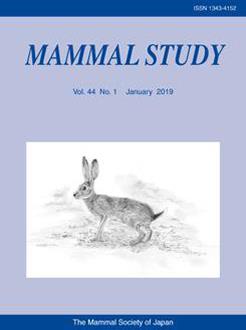The concrete walls of check dams are considered a physical barrier for aquatic and semiaquatic animals that inhabit mountain streams. Traveling behaviors around concrete check dams by the Japanese water shrew Chimarrogale platycephalus, a semi-aquatic mammal, were directly observed via radio-tracking in Kamikoshi Stream in central Honshu, Japan. Traveling behaviors were mainly observed on the wet concrete walls and in the backfill sediments of check dams. Chimarrogale platycephalus generally crossed the wall directly, and route selection was affected by the traveling direction of C. platycephalus and the surface wetness of the concrete wall. Detouring behavior around the concrete walls was observed visually only once during the survey period. Using modulation of sounds on a FM receiver, the movements of C. platycephalus were detected in their hiding places along the stream. Some individuals frequently ceased movement within the backfill sediments. Our results suggest that existing concrete check dams do not prohibit the shrew's movements between upstream and downstream of the river and that backfill sediments may be utilized as resting places.
How to translate text using browser tools
5 January 2019
How Does the Japanese Water Shrew Chimarrogale platycephalus Cross the Concrete Walls of Check Dams?
Hiroaki Saito,
Hiroshi Hashimoto,
Teruaki Hino,
Masaharu Motokawa
ACCESS THE FULL ARTICLE

Mammal Study
Vol. 44 • No. 1
January 2019
Vol. 44 • No. 1
January 2019
backfill sediment
behavior
concrete check dam
movement detection method




